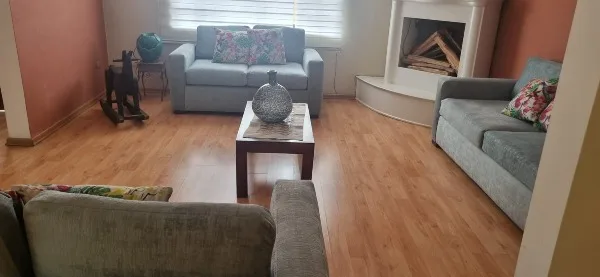ECU911, Ecuador’s emergency response system, is based on the 9-1-1 model established in the U.S.

ECU911 is housed in a multi-story monolithic building on the south side of Cuenca.
By Stephen Vargha
Enter the operations room of ECU911 and it looks like it could be the war room scene from the 1964 Stanley Kubrick movie, “Dr. Strangelove.”
But there is no General “Buck” Turgidson (George C. Scott) screaming, “He’ll see the Big Board!”
Nor is President Merkin Muffley (Peter Sellers) presiding in the room, attempting to control the proceedings.

It is highly recommended that one get the ECU911 app. It helps emergency personnel with your needs, including your location.
Instead, there are 20 to 25 people in ECU911’s call center delegated to do a variety of tasks that include traffic, security, health, fire, natural disasters, city services, and military services.
And the big board is a huge wall that is composed of at least four camera images feeding live images from across Cuenca.
“ECU911 was created 12 years ago,” said Esteban Coronel Vida, Coordinator of Zone 6 for ECU911. “It began with centers in Guayaquil and Quito. Soon afterwards, Cuenca’s center was built.”
The national organization began under the Ministry of Security. It is now part of the central administration, which reports directly to the president of Ecuador.
Today, there are 17 ECU911 centers in the country’s 24 provinces. Cuenca is a regional center, serving both Azuay and Cañar provinces. Coronel is in charge of Zone 6, which includes Cuenca’s center as well as the small one in Morona-Santiago province.
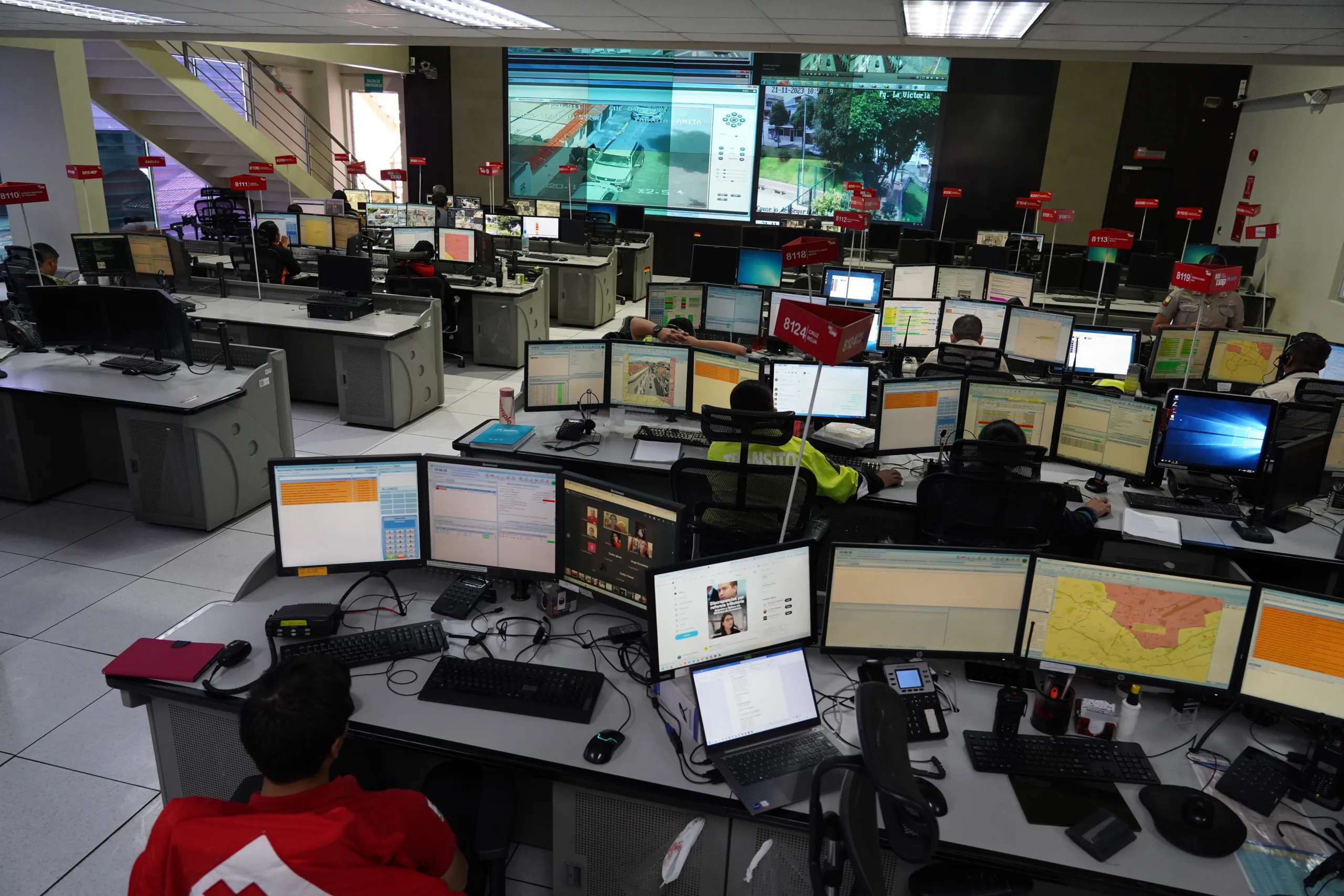
The call center usually has around 25 people dedicated to various tasks, including surveillance.
“ECU911 was created to combine all of the emergency numbers being used,” said Coronel. “Now we have only one facility addressing traffic emergencies or dispatching an ambulance.”
What Ecuador set up is modeled on the United States. In November 1967, the FCC met with the American Telephone and Telegraph Company (AT&T) to establish a universal emergency number that could be implemented quickly. AT&T announced a couple of months later it would establish the digits 9-1-1 as the emergency code throughout the country.
On February 16, 1968, Alabama state senator Rankin Fite completed the first 9-1-1 call in the United States. There was no emergency at the time. Instead, the call was really a claim for bragging rights. The call was made from the Haleyville, Alabama mayor’s office and rang the town’s police station.
What ECU911 does goes beyond what most 9-1-1 centers in the U.S. do. Housed in a multi-story monolithic building, in the southern part of Cuenca, facing Calle Jacinto Flores, it monitors 250 security cameras, with 182 in Cuenca and the rest in Cañar province.
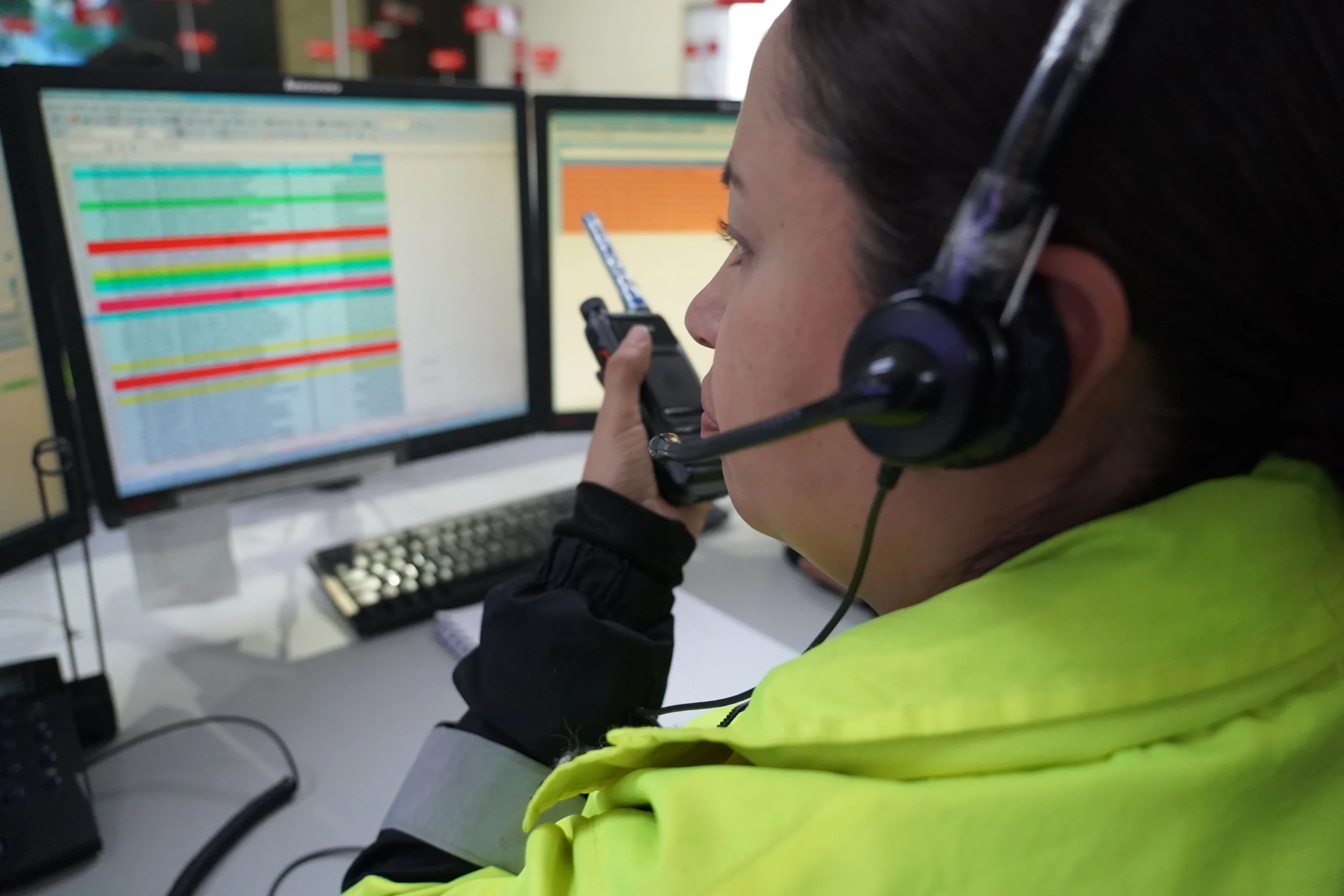
ECU911 is in constant communications with their emergency crews, including its public ambulances.
“We started installing security cameras in 2012,” said Coronel. “On top of the 182 cameras we monitor in Cuenca, the city has about 220 cameras throughout the municipality.”
Those cameras include what EMOV (Cuenca’s transit and transportation department) monitors at intersections with traffic lights as well as on the Tranvía and along its 10.7 km. / 6.6-mile line.
The cameras that are part of ECU911 hang from poles and rooftops. They are always adding new ones, including a recent one installed at Parque La Isla that is mounted next to Paseo Río Yanuncay, the main street in and out of the barrio.
There are three shifts every day of 20 to 25 people manning the call center. The first shift is 6 a.m. to 2 p.m., followed by the second working 2 p.m. to 10 p.m. Third shift works overnight from 10 p.m. to 6 a.m.

ECU911 can monitor traffic in real-time such as this overturned truck on Av. de las Américas.
Half of the people are handling calls while the other half are operating and monitoring the security cameras. Many of the cameras have 360 degrees capability with tilt, pan, and zoom. If they see something suspicious, the call center employee can zoom in on the action.
“Police and fire can monitor our cameras,” said Coronel. “But they cannot control our cameras.”
While busy monitoring the cameras, the ECU911 center in Cuenca is handling about 700 calls per day for an average of 29 calls every hour.
“We have more work during holidays and weekends,” said Javier Tehanga, Communications Specialist for ECU911. “It was crazy for Cuenca’s 203rd birthday. We had a lot more calls for public drinking, car crashes, and pickpockets.”
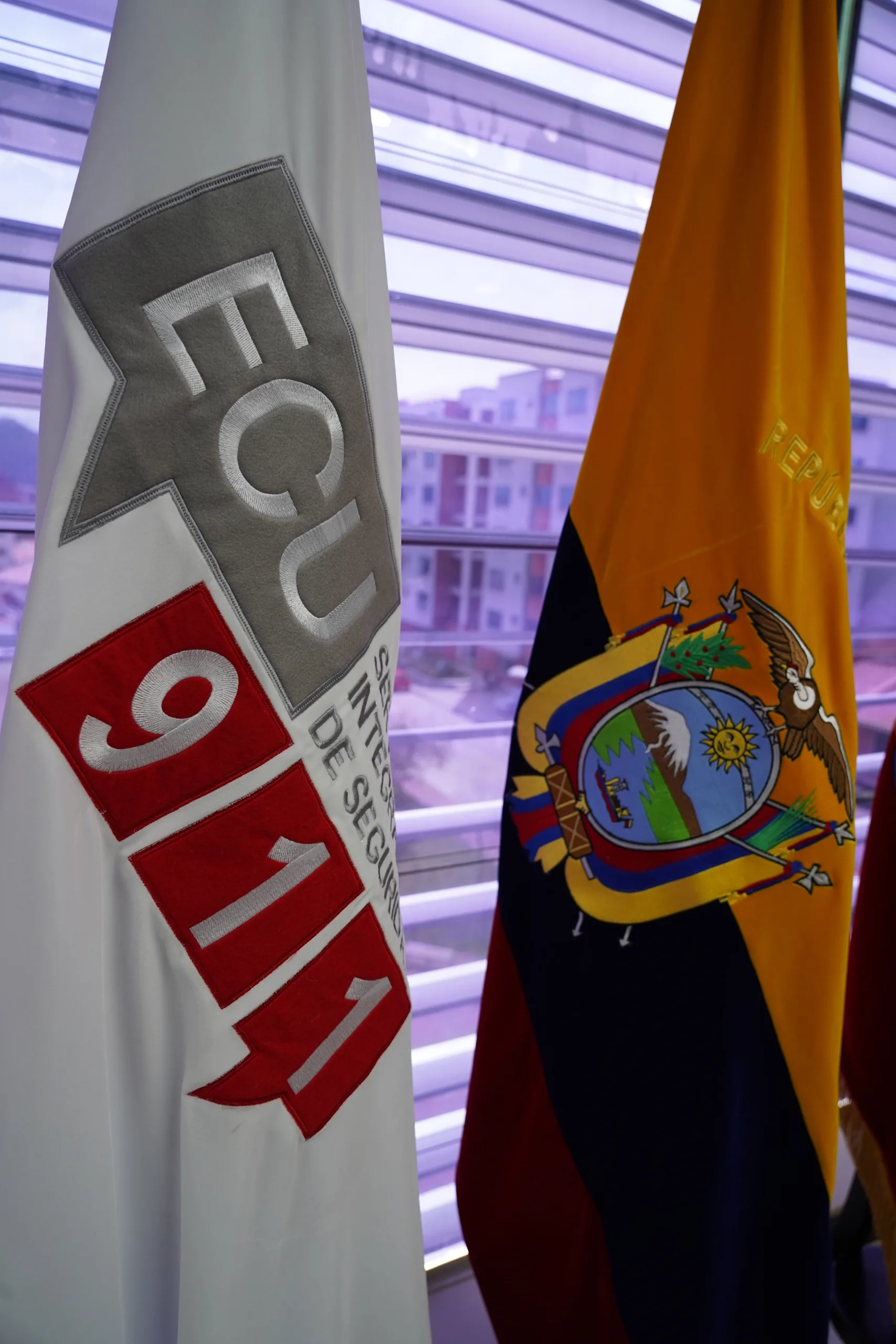
The flags of Ecuador and ECU911 stand in the conference room. On the national level, ECU911 reports directly to the President of Ecuador.
Many calls will involve callouts for an ambulance. There are 66 ambulances for the region, with 44 being in Cuenca.
“We are not including private ambulances in those numbers,” said Coronel. “There are several institutions that control those ambulances.”
Ambulances dispatched by ECU911 are sent according to availability and which one is the closest to the caller.
“The people in the ambulances are trained for medical emergencies,” said Tehanga. “Normally they are paramedics and that’s a career here.”
“If you request an ambulance from Monte Sinaí or any other private hospital, we cannot dispatch one,” said Tehanga. “You have to call them directly.”
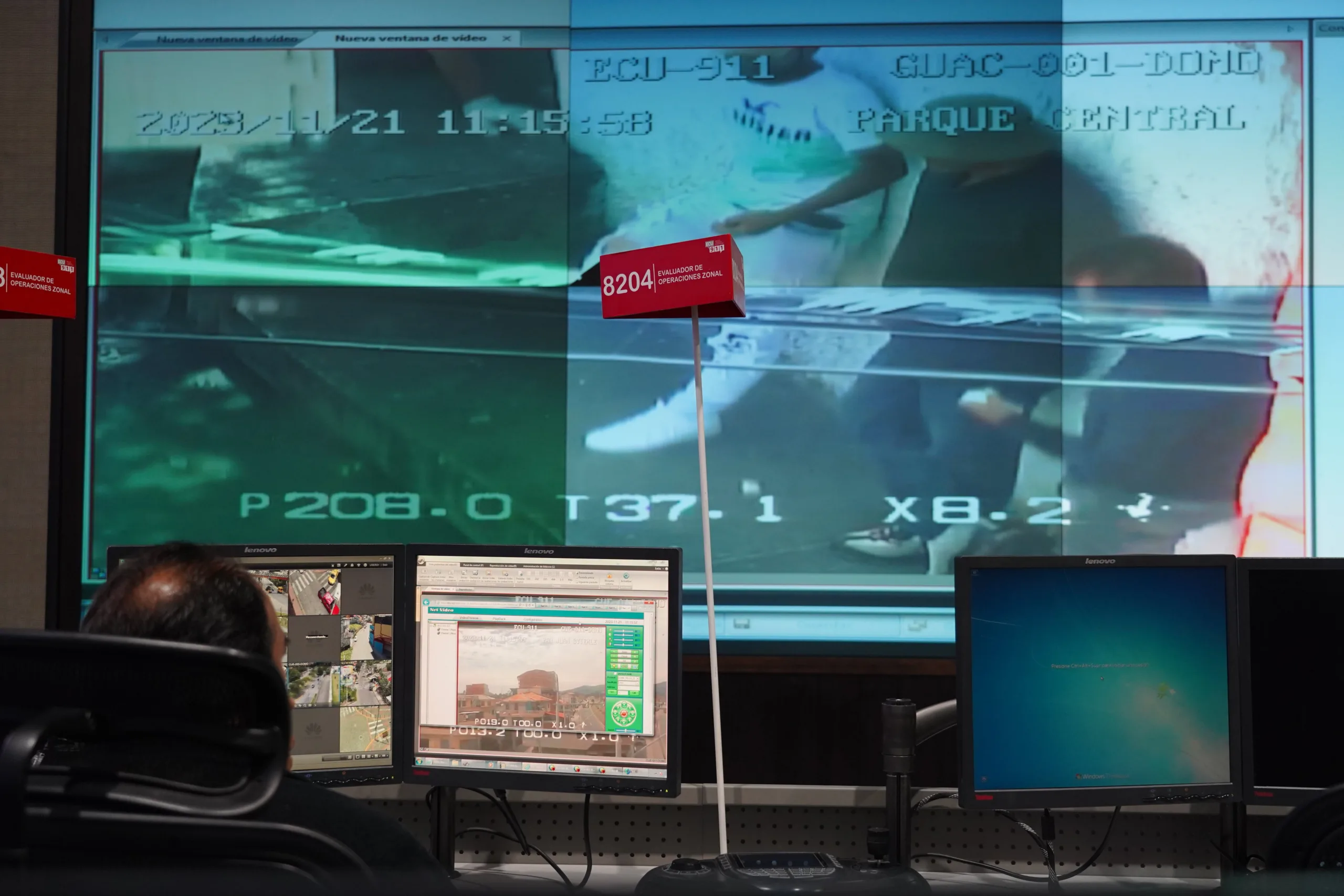
The camera at Parque Central (Parque Calderón) is zoomed in on three men that ECU911 wants to monitor.
Public ambulances are free, but private ones will charge the patient. There are two private ambulance companies in Cuenca, according to Coronel.
“A private ambulance can cost as little as $30 to be transported from El Centro to Hospital José Carrasco Arteaga (an IESS hospital on the southeast side of the city),” said Coronel. “That’s only for transportation. Oxygen and other services are extra.”
Calling ECU911 can be intimidating for a foreigner who can speak little or no Spanish, but the center can handle English, French, and many other languages.”
“We have a nationwide list of ECU911 employees who can speak English. The list has people who can speak fluently in other languages, too,” said Coronel. “If no one currently working can speak English or your native language, the call is transferred to an employee who can speak the language.”
“I was at home one day when ECU911 came up on my phone’s ID,” said Tehanga. “The center had transferred a 9-1-1 call from an American to me. He was so relieved I could help him in English.”
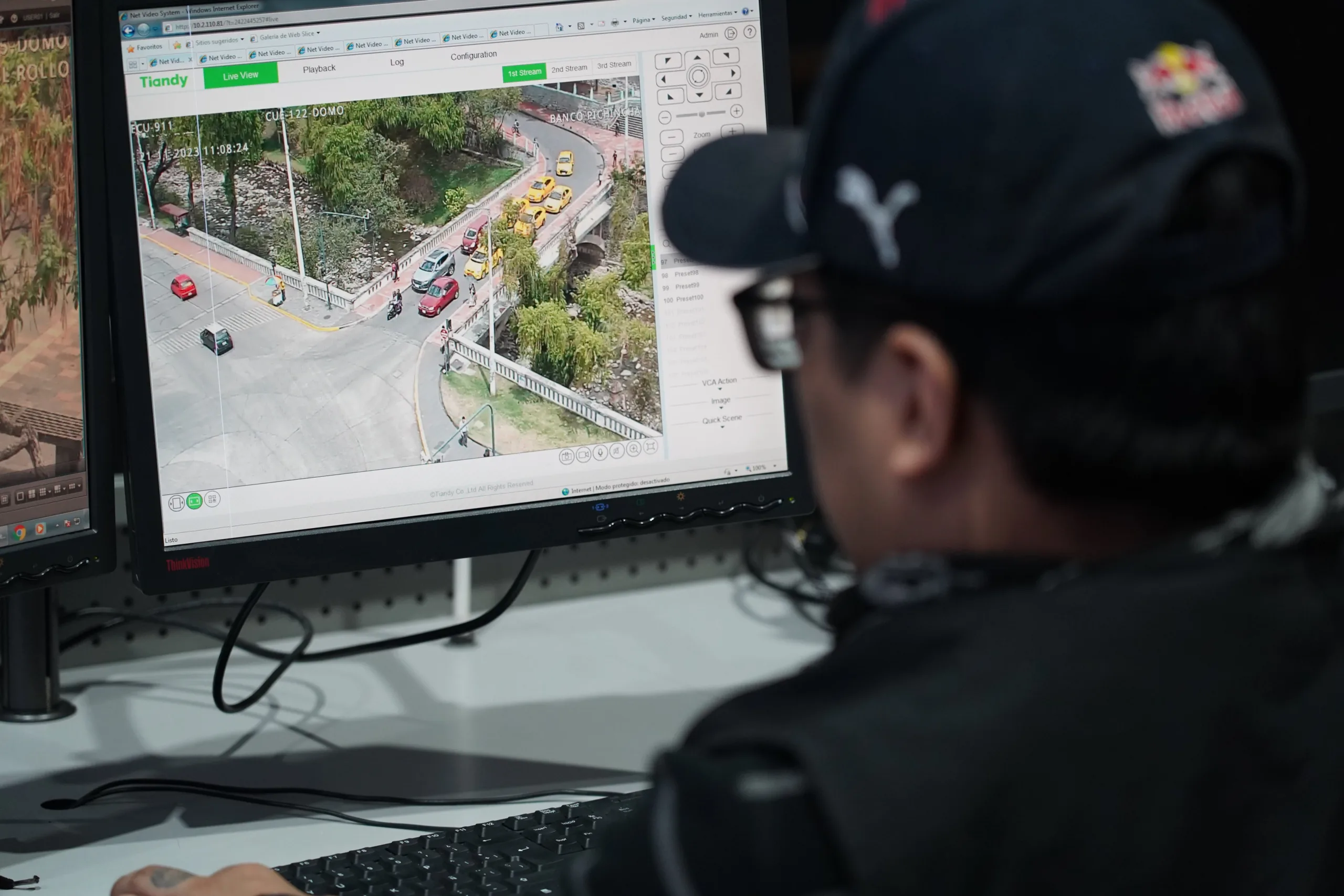
ECU911 monitors 182 cameras in Cuenca, including this one aimed at Benigno Malo and Av. 12 de Abril.
Usually there is at least one person at the call center who can speak English, so calls from Americans and Canadians are usually not transferred.
It is highly recommended by ECU911 to add their app to one’s phone. The app uses information (including GPS) to respond to incidents and emergencies. For internal purposes, ECU911 uses the app to measure service times and other data for the improvement in the quality of the emergency services.
The phone app will not make any information collected from its users available to any organization or company. It takes legal action by authorities to obtain that information.
The ECU911 app is free of charge, and it can be used even by people with hearing or physical disabilities. Android, iOS, and OS can all use the app.

Four large screens display security camera live images on a large wall. ECU911 employees have two computer monitors to look at as well.
To activate the service, you must download the application and register your personal data. Once registered, the ECU911 will have one’s personal medical information such as blood type, allergies, and pertinent medical conditions.
ECU911 is in charge of the automated external defibrillators (AED) in every part of Cuenca. AEDs are for public use. They apply an electric charge or current to the heart to restore a normal heartbeat. Since 2004, AEDs have been required on all American air carriers.
“We have 23 defibrillators throughout the city, including at Parque de la Madre and at some Tranvía stops,” said Coronel. “The first thing the machine says is, ‘Call 9-1-1.’”
Latin American countries like Colombia, Peru, and Costa Rica are now trying to replicate what ECU911 is doing.
But ECU911 is not resting on its laurels. It has ambitious plans that may take years to come to fruition.
“Our cameras are ten years old. The entire country needs new cameras that have thermal imaging and facial recognition,” said Tehanga. “But we are talking $300 million to make that a reality.”
_________________
ECU911 App, Android: https://play.google.com/store/apps/details?id=com.ecu911&hl=en_US&gl=US (The country for the Google Play account has to be Ecuador), Apple: https://apps.apple.com/ca/app/ecu-911/id723185508
Photos by Stephen Vargha
Stephen Vargha’s book about Cuenca, “Una Nueva Vida – A New Life” is available at Amazon in digital and paperback formats. His blog, “Becoming Cuenca,” supplements his book with the latest information and photos by him.











